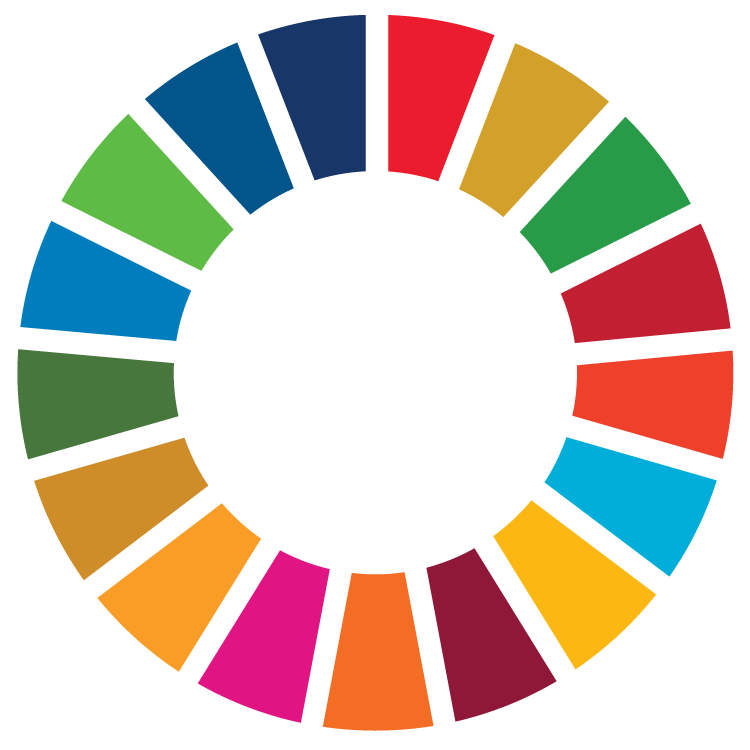
Text traduït
Aquesta assignatura s'imparteix en espanyol. El pla docent en català és una traducció de l'espanyol.
La traducció al català està actualitzada i és equivalent a l'original.
Si ho prefereixes, consulta la traducció!
Texto original
Esta asignatura se imparte en español. El texto original de este plan docente es en español.
Text created with automatic translation
The language of instruction of this subject is Spanish. The course guide in English is an automatic translation of the version in Spanish.
Automatic translation may contain errors and gaps. Refer to it as non-binding orientation only!
Perhaps you should consult the original version of the text!
Course
Advertising and Public Relations
Subject
Internet Creativity
Type
Compulsory (CO)
Academic year
3
Credits
3.0
Semester
1st
| Group | Language of instruction | Teachers |
|---|---|---|
| G15, classroom instruction, afternoons | Spanish | Silvia Barrios Baena |
Sustainable Development Goals (SDG)

- 5. Gender equality
- 12. Responsible consumption and production
Objectives
The overall objective of this course is to introduce students to the specific needs of interactive media, explore their creative possibilities, and define new communication boundaries and ways of reaching target audiences online.
And, specifically:
- Encourage creative thinking processes in students.
- Understand the importance of creative awareness in campaigns.
- Design campaigns of different nature for each type of platform.
- Promote creative thinking as a tool for personal development.
- Explore together the creative possibilities of new media and supports, and transcend conventional approaches in the search for new creative languages.
Learning outcomes
- Identify the advertising and public relations theories, processes, structures, and techniques that inform the functions of the various departments of an advertising agency, creative boutique, consulting firm, or media center in conventional, virtual, and emerging environments.
- Understand the methods and problems of the different branches of research in psychology, sociology, communication, and marketing in general, as well as audience motivations, consumer behavior analysis, and purchasing processes.
- To convey information, ideas, problems, and solutions appropriately and in accordance with academic standards, in a creative and innovative manner, to both specialized and non-specialized audiences, while being respectful of linguistic diversity and diverse social, cultural, gender, and economic realities.
- Implement a communication plan for an organization, brand, or product, resulting from a relationship and investigative capacity to establish a fluid and competent interaction between the advertiser and the agency based on the parameters of creativity and innovation.
- Operate in different computer and digital environments (multidisciplinary and complex) linked to the disciplines of communication in all its written, visual, and audiovisual dimensions (in one's own language and in foreign languages), as well as those that facilitate new relationships with audiences in face-to-face, virtual, and emerging environments, with a high degree of creativity and innovation in form and content.
Content
- Banners and pop-upsNew creative proposals for standard advertising formats
- HashtagsConceptual focus on keywords
- MEMESHumor as a creative and corporate image tool
- Video. Virality and creativity
- Audio. Evolution of the radio ad in interactive media
- Newsletter. How to get a better response from a newsletter with creativity
- Landing page. Creativity in the search for conversion
Evaluation
- Assignments: 70%. All assignments must be submitted. The regular assignment must be submitted within the established deadline. There is also an additional deadline for making up for failed grades or improving grades. Assignments must be submitted within the deadline determined by the instructor, and the assignment must be opened and closed in class. Assignments cannot be submitted before or after this deadline. If the assignment cannot be submitted due to illness or other force majeure, the instructor must request that the assignment be opened during the following class.
- Exercises: 20%. These exercises include creativity exercises, creative dynamics, and campaign or concept analysis exercises that students must submit. Students are notified of these exercises in advance in class and through the course work plan. If the exercise cannot be completed due to illness or other circumstances, a new deadline for submitting the assignment must be requested from the teacher during the following class.
- Attitude and participation: 10%
Methodology
When necessary, students are asked to work on social media profiles, as well as on the Mailchimp platform and a free WordPress blog.
Classes are held in a classroom without computers. Materials are not designed in class. The concepts and structure are discussed in class, and decisions are made about what needs to be developed for delivery.
Bibliography
Key references
- F. Osborn, Alex (1960). Imaginación aplicada. Velfex.
- de Bono, Edward. (1993). El pensamiento lateral. Ediciones Paidós.
- Lois, George (2012). Damn Good Advide (for people with talent). Phaidon Press.
- M&C Saatchi (2013). Brutal Simplicity of Thought: How It Changed the World. St. Martin's Press.
- Young, James Webb. (2003). A technique for producing ideas. A McGraw-Hill advertising classic.
Further reading
Teachers will provide complementary bibliography and compulsory reading throughout the course via the Virtual Campus.